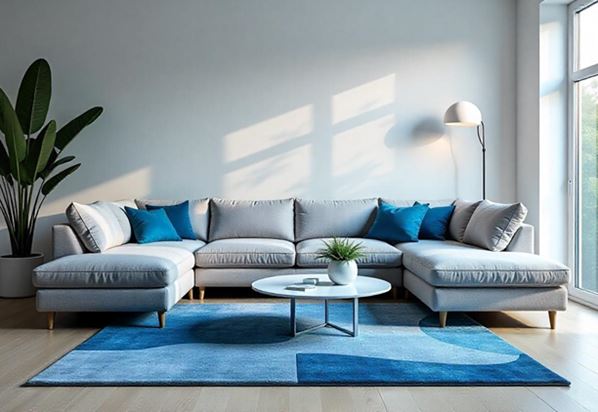
A furniture configuration tool lets shoppers digitally interact with products in real-time, offering an immersive experience far beyond static images.
Users can manipulate product views, zoom in for details, and personalize options such as materials, colors, and finishes. This dynamic interaction allows them to see exactly how a piece of furniture would look in their home, transforming the online shopping process into something far more engaging and realistic.
How 3D Customization Enhances Shopping Experiences
One of the greatest impacts of 3D configurators is the enhanced customer journey. Traditionally, online furniture shopping lacked the tactile, visual understanding that in-store experiences provide. Buyers had to rely on basic descriptions and photos, which often failed to convey the true look and feel of a product. However, with 3D configuration technology, users can now experience furniture digitally as if they were examining it in person.
Shoppers can rotate items, zoom in to inspect finer details, and easily switch between different design choices. For instance, they can preview various upholstery fabrics, try different finishes, or adjust the style of the legs—all in real time. This level of customization not only makes the shopping process more enjoyable but also helps customers make informed decisions that match their personal style and space needs.
Driving Sales and Reducing Returns
The introduction of 3D configurators in the furniture market has led to notable improvements in both sales conversions and return rates. By providing a highly interactive and detailed view of products, these tools allow customers to fully grasp a product’s features, which increases their confidence to make purchases. Personalizing options creates a stronger connection between the buyer and the product, leading to higher conversion rates.
Moreover, the ability to visualize furniture accurately reduces the likelihood of buyer dissatisfaction, which is a common cause of product returns. With a clearer idea of what to expect, customers are less prone to disappointment when the product arrives, helping retailers cut down on costly returns and logistical headaches.
Accommodating Diverse Customer Tastes
Another key benefit of 3D configurators is their ability to present a wide array of customization options without overwhelming buyers or requiring extensive physical inventory. Traditionally, retailers needed to display multiple versions of the same product—each with different finishes, sizes, or designs—in physical showrooms. However, with a 3D configurator, customers can explore every available option virtually, testing various combinations in a seamless and clutter-free environment.
This digital flexibility helps retailers meet diverse customer preferences, whether they’re seeking minimalist designs or luxurious styles. It enables a streamlined shopping experience while offering more personalization than ever before, broadening the retailer’s appeal and making it easier for buyers to find their perfect match.
The Future of Furniture Retail
As technology progresses, the integration of augmented reality (AR) and virtual reality (VR) with 3D configurators will further enhance the furniture shopping experience. These emerging technologies will offer even more immersive experiences, enabling customers to visualize furniture in their homes or explore virtual showrooms from anywhere.
Imagine using AR to see how a couch would look in your living room simply by pointing your smartphone at the space. Or, putting on a VR headset to walk through a showroom as though you were there in person. These advanced features will provide shoppers with a new level of control and personalization, allowing them to make confident decisions without stepping into a store.
Steps for Implementing 3D Configurators in Furniture Retail
For furniture businesses, integrating 3D configurators may seem complex, but the benefits significantly outweigh the effort. Here are key steps for successful implementation:
- Choose the Right Platform: Select a 3D configuration tool that fits your business needs and offers scalable options. Ensure it integrates smoothly with your existing e-commerce platform and provides mobile compatibility.
- Create High-Quality 3D Models: The accuracy and detail of your 3D models are crucial. High-quality models reflect your products’ craftsmanship and ensure customers get a realistic view of what they’re buying.
- Integrate Seamlessly with Your Website: Ensure the configurator is user-friendly and accessible across devices, including mobile. A seamless experience can drive higher customer engagement and satisfaction.
- Explore AR and VR Possibilities: Enhance the experience further by adding AR and VR features, enabling customers to place items virtually in their homes or walk through immersive showrooms.
- Promote the Tool: Once launched, promote the configurator through your digital channels. Use demonstrations and tutorials to help customers understand how to use it effectively.
Conclusion
3D furniture configurators are revolutionizing the retail landscape by giving customers a highly interactive and personalized shopping experience that blends the best of online and in-store interactions. With the ability to visualize, customize, and interact with products in real time, these tools drive sales, reduce returns, and cater to a wide variety of tastes. As AR and VR technology advances, the future of furniture shopping is set to become even more immersive, making 3D configurators an essential feature for retailers in the digital age.




